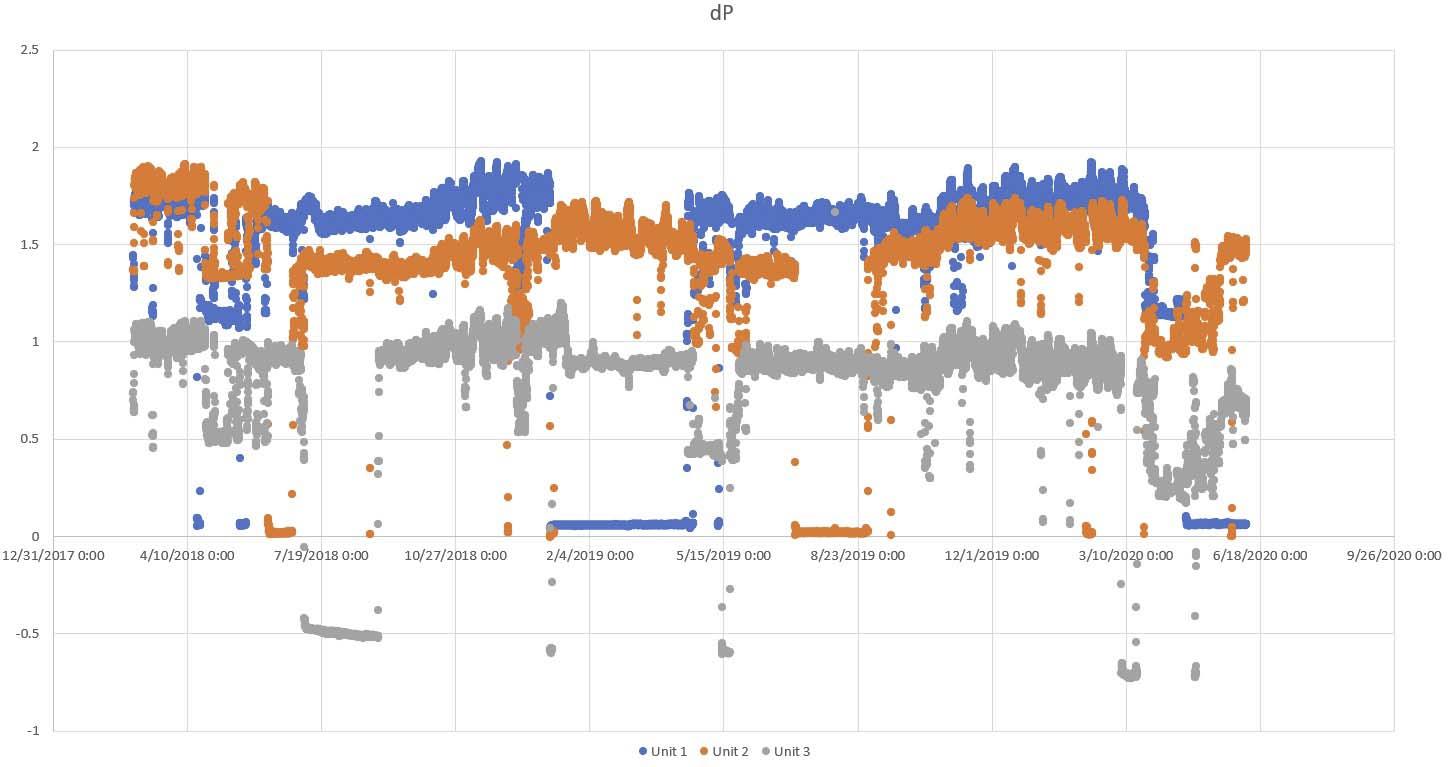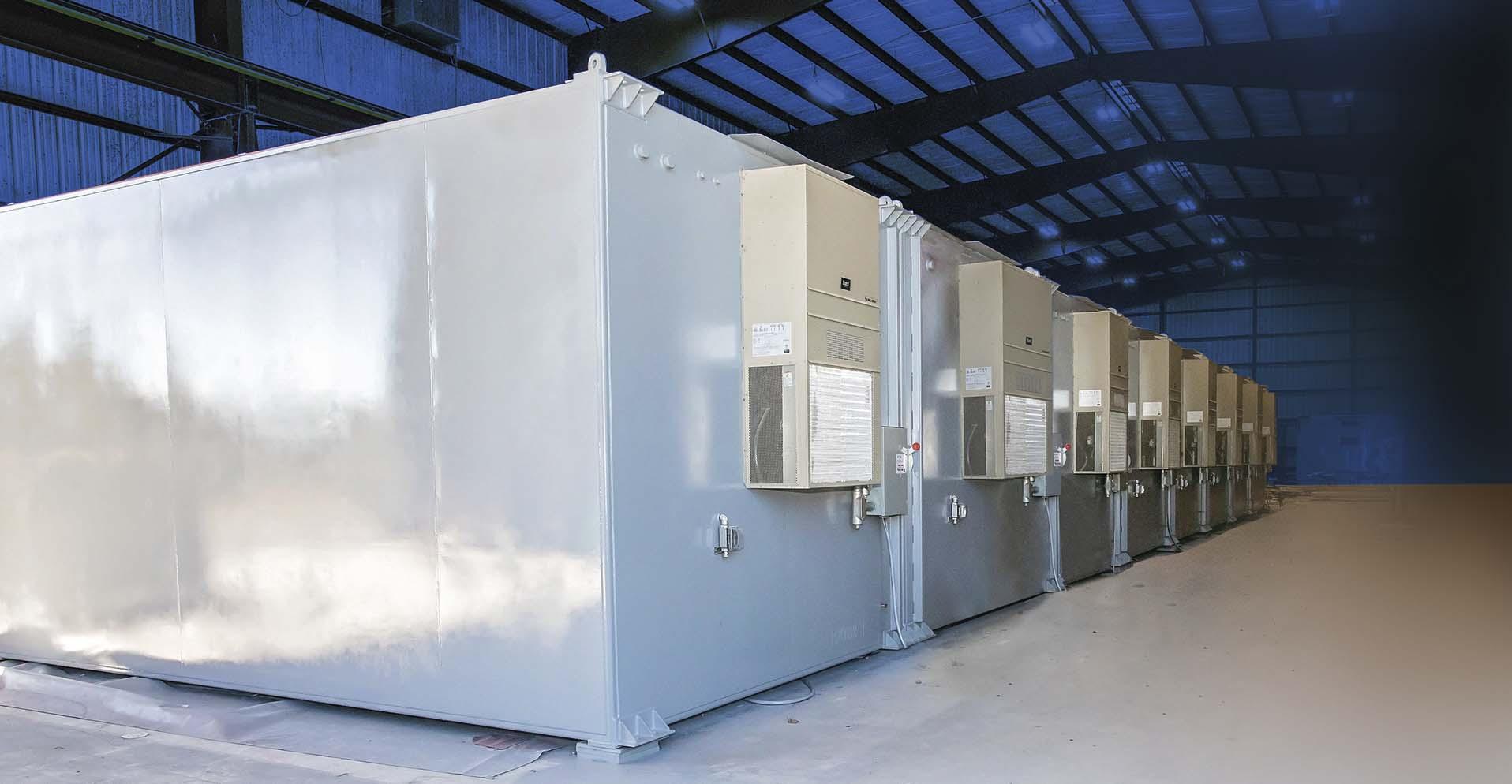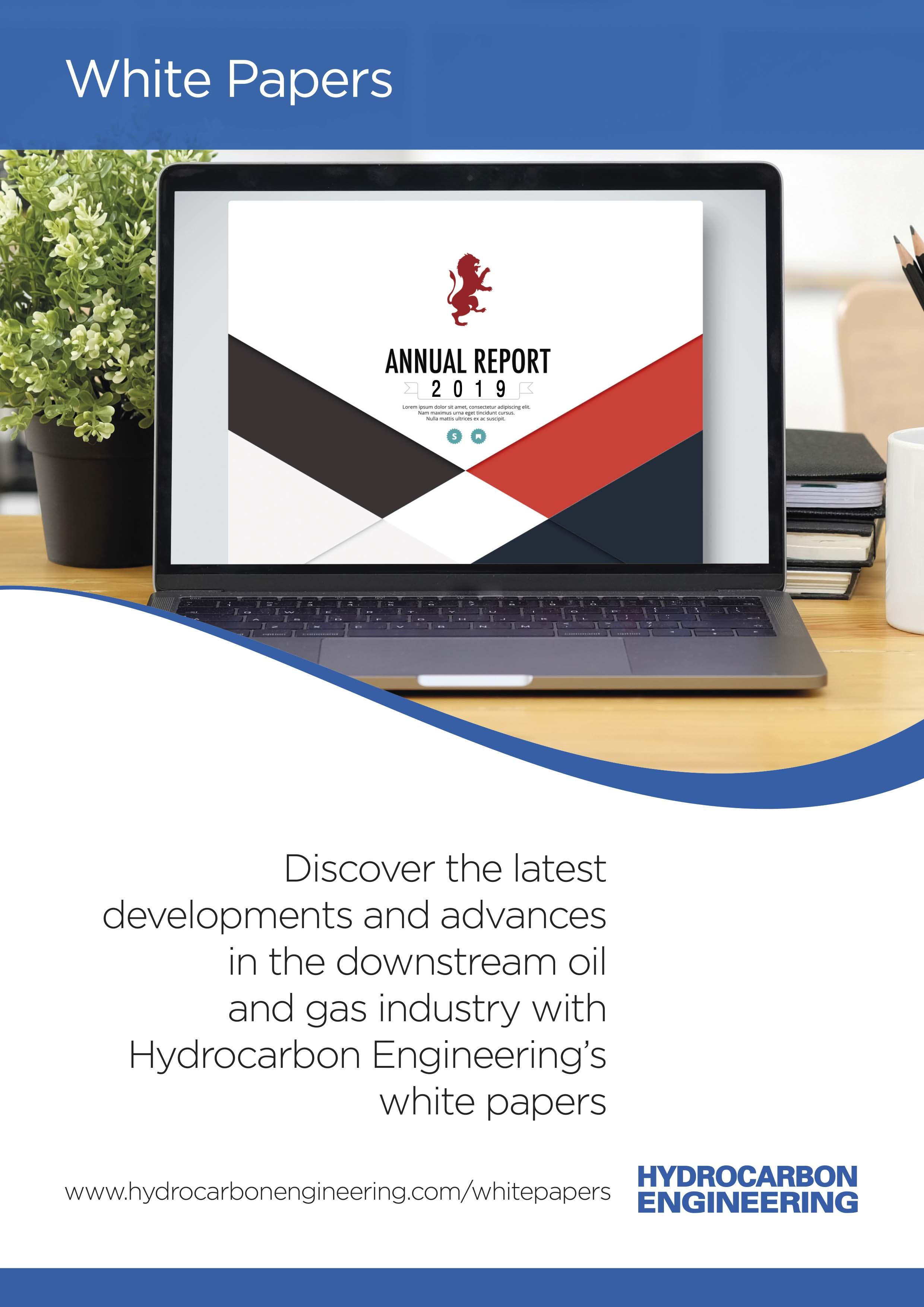
10 minute read
Emissions catalyst cleaning – no need to wait for a turnaround



Steve Houghton, Groome Industrial Service Group, USA, explains how online catalyst cleaning can deliver a higher return on investment than traditional cleaning.
The performance of an SCR catalyst system is more critical than ever. Refi neries are under close scrutiny with regulators, who are keeping a close eye on atmospheric pollutants. Tight restrictions on NOX levels make high-performing emission control technologies an essential element of the business model.
From a production standpoint, refi nery owners and management aim to achieve maximum NOX reduction while minimising ammonia consumption and backpressure, all in an effort to ensure effi cient operations.
And how does a refi nery today most effi ciently and successfully achieve these goals? The answer is through a properly designed, installed, and maintained SCR catalyst system – with emphasis on skilled and forward-thinking maintenance services that continue once it is ensured the system has a solid foundation.
The role of online cleaning
In a situation where a refi nery faces operational issues – such as commonly increased backpressure and NOX conversion issues – a choice must be made. A plant can completely shut down a unit to carry out required maintenance. Or, a facility can look to fi nd another option, preferably one where operations can continue while the work takes place.
This latter method, known as online cleaning, has enormous benefi ts for a refi nery or facility in the oil and gas or petrochemical space looking to effi ciently maintain a NOX or CO catalyst.
Perhaps most importantly, a plant manager does not need to worry about emergency shutdowns or be concerned about operating out of compliance, and there is no need to run at limited capacity. These challenges are taken off the table so that the focus can be on continuing production and delivering return on investment (ROI). This is arguably the goal of every refi nery operator.





Figure 1. Post-cleaning inspection image.

Figure 2. Example of access door install in progress.
Perhaps the best way to showcase the benefi ts of online cleaning can be demonstrated by a case study example. There are six main points to emphasise when considering an example refi nery online cleaning project: The process capabilities of online cleaning. The importance of optimising project design. How the system works. The expected shift count. The quantifiable value of online cleaning. How safety engineering is essential for each step of the process.
Case study
The featured case study took place in early 2021. This specifi c facility, located on the West Coast of the US, experienced an upset and refractory was liberated from the duct walls. This resulted in the masking of approximately 40% of the SCR catalyst face and caused multiple environmental issues, including reduced NOX conversion through the SCR due to blocked active Vanadium sites.
It is important to note that the nature of the contaminant is crucial to understand when diagnosing an issue and proposing a solution. Due to the design of the catalyst itself, fi ne refractory dust can cause enormous problems with limited to no visual evidence on the face of the catalyst itself.
Additionally, this particular plant saw increased ammonia slip caused by unreacted ammonia, which overwhelmed the remaining catalyst section that was not affected by the refractory contaminant. These are both environmental concerns that put the plant uncomfortably close to NOX and ammonia permit allowances.
The ultimate concern for the plant, which was causing the unit to run at limited capacity, was back pressure. Plant management gradually dialed down production capacity from 100% to 90%, with production eventually brought all the way down to 50%.
Running at limited capacity resulted in an immediate negative impact on the business operations of the facility, specifi cally revenue and output. These fi nancial pressures also put pressure on plant management, as the team closely monitored the situation and searched for solutions to the problem. However, the management’s hope was for the problem to work itself out while the unit ran at limited capacity.
As time went on, there was no sign of performance improvement and production loss mounted. As the issue grew progressively worse over a two-week period, plant management reached a point where they had to decide whether to shut the unit down or fi nd another option.
It is important to note that this particular facility and unit were not built with online cleaning in mind by the design engineers, as there were no access ports that would enable access to the upstream side of the SCR catalyst for cleaning. While this caused challenges and concerns when the online cleaning option was presented, it was not a deal-breaker.
No ports? No problem
The solution? A required – but implementable – custom design would allow access for a trained team to then correct the issue and avoid a plant emergency shut down. It was necessary to change the process capabilities and carefully consider how the system works.
Education was an important part of the early steps of the process. While the plant was interested in online cleaning, the facility’s management team thought this option was not possible as there was no way to access the catalyst while the unit was running.
The Groome team of technical representatives and engineers reviewed the facility unit drawings and visited the refi nery to inspect unit access. The team identifi ed an online cleaning design along with a critical operating and safety plan. The ports were a critical piece to the solution puzzle, and early on it was determined how many access ports were needed to effectively clean the catalyst while the unit was operating.
Exterior visual inspection allowed for project access and safety planning coordination. Factors considered in the development of the plan included: Operator accessibility.

Figure 3. This graph demonstrates that three units with the same exact design, operating at the same time, can have different running parameters based on SCR performance.
The location of mounting points for cleaning equipment and fall protection. Job hazard analysis (JHA) for mitigated heat and exposure.
Additional information was also required in the planning process. This included unit drawings of the plant, highlighting duct wall design and metallurgy.
As the plan for port design was developed, key factors considered included the following: Orientation of catalyst face. Wall depth. Wall design. Wall material. Duct frame structure.
The importance of the planning process
The proper planning and optimisation of all of these factors enables the most strategic solution to be developed. This includes the ultimate decision for the correct number of doors, the proper size of doors, as well as maximised access to the face of the catalyst.
In this particular case, the planning phase was thorough and extensive. As a result of detailed planning, the Groome team expedited both the custom design of the doors, as well as door production. Integrated into the process, safety and production protocols were outlined to drive project effi ciency and environmental, health and safety (EHS) compliance.
During the planning phase, the continued increase of NOX levels due to lack of conversion posed a rising environmental concern. It became increasingly clear that it was critical for the facility to address these issues while the unit continued operations.
Taking into account both internal and external considerations, Groome designed the port installation process to accommodate and focus on one port at a time – this was to ensure there was no unit interruption or imbalance. It is worth noting that installing multiple ports to increase project production effi ciency is possible with some duct wall designs. Factors considered include gas path pressure and the temperature level at the catalyst face.
In the case of this particular plant, the unit’s gas path had a vertical up-fl ow with a catalyst in the horizontal orientation. The catalyst bed sat on a frame that provided an unobstructed gas path, but did hinder access in some areas. While this was taken into consideration when placing the vacuum ports, it is important to note that the key to navigating around the catalyst and duct frame components is a modular cleaning tip design. Since no two units are ever the same, the team must be prepared with different length, angles and sized tips for each scenario. It is not uncommon to have to utilise two or three design setups for each cleaning so that any unexpected challenges can be resolved quickly.
For this project, the catalyst was corrugated; however, all styles of SCR or CO catalyst can be effectively cleaned while online whether corrugated, extruded, or pleated. It is essential that the selected maintenance team have the required skills and experience to service all catalyst manufacturers, plus have the required capabilities to work on catalysts of any age (which may range from brand new to 10 or more years in service). Catalyst pitch is also not an issue but is certainly a design consideration.
The immediate benefits of online cleaning
Once the port installation was inspected and the team received the green light to continue, Groome moved forward to complete a comprehensive cleaning in four shifts. A day-and-night schedule expedited the cleaning process. Results were quickly realised when viewing plant running
minutes. The thorough cleaning reduced the back pressure by 55%, which restored the operations to the original design pressure. The team quickly returned the unit to the plant due to the chosen – and effi cient – method of cleaning.
In addition to improved back pressure, NOX conversion, and decreased ammonia slip, the plant was able to realise an immediate ROI on the project due to shutdown avoidance.
The lasting benefits of online cleaning
In addition to these near-term results, the project provides ongoing benefi ts for this plant with its future operations and maintenance needs. The presence of cleaning ports is truly an evergreen asset upgrade and will allow effi cient cleaning to take place at any time in the future.
The work carried out during this project is basically an insurance policy to keep the plant up and running into perpetuity. And in the event of a unit upset, plant management now has options that were not present before this work was completed.
Continued safety
There is an escalated level of protocol for safety when the project is performed while the unit is in operation. Safety measures are engineered into each step of the project to mitigate the risk of injury from heat exposure, NOX exposure, burns, or falls.
High-temperature compliant stainless-steel hoses are utilised to perform cleanings and the size of the hoses depends on how much vacuum is needed to draw. Additionally, high-temperature fi lters should be utilised to not damage the baghouse. Skipping this advice can cause schedule delays in the cleaning, which puts at risk additional crew production.
While each project has a different production and safety design due to unit design characteristics, personal protective equipment (PPE) utilised on each project is relatively consistent (there must be top-grade PPE for the team when working on a unit in operation).
It is also essential to take the proper heat safety precautions since heat is escaping through the ports. It is advisable to continually monitor the temperature and ambient air with sensors worn by each operator. An appointed crew member can be on point to act as a timekeeper to rotate the crew regularly, so the team avoids excessive exposure. In addition, heat arresting systems allow for tempered air to be monitored by a dedicated crew member; this works to ensure touchpoints are managed with appropriate PPE and to protect the cleaning equipment itself.
The bottom line
There is no doubt that the care and maintenance of the catalyst must be top-of-mind and high on the priority list for all refi nery ownership and management. Today’s additional tools and techniques can assist a plant’s team to achieve the desired results in the optimal way – a way that enables the facility to continue production and minimise downtime, all while delivering a strong ROI. Online cleaning is a solution that is likely to continue gaining traction in the industry.















